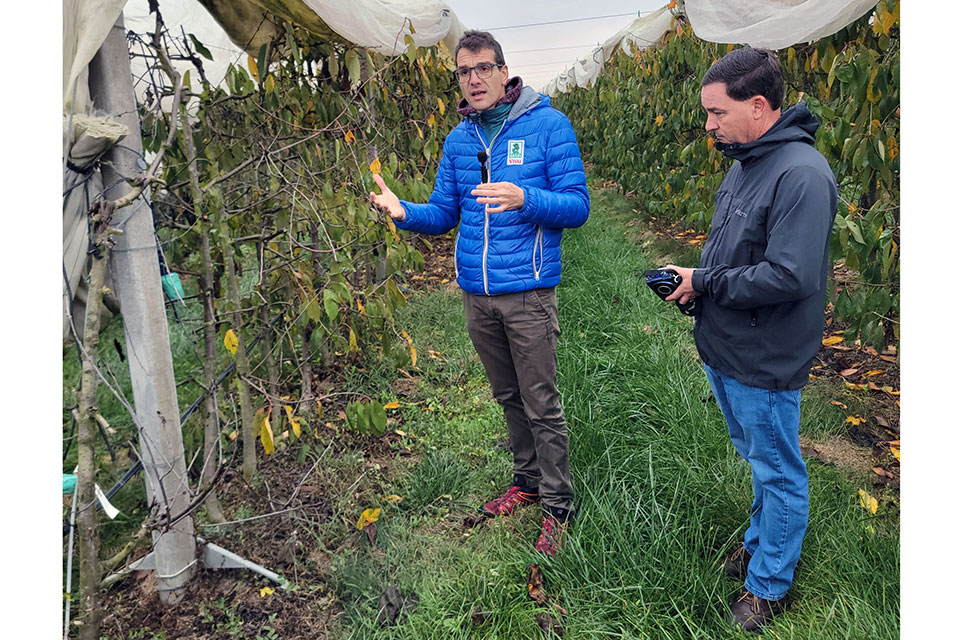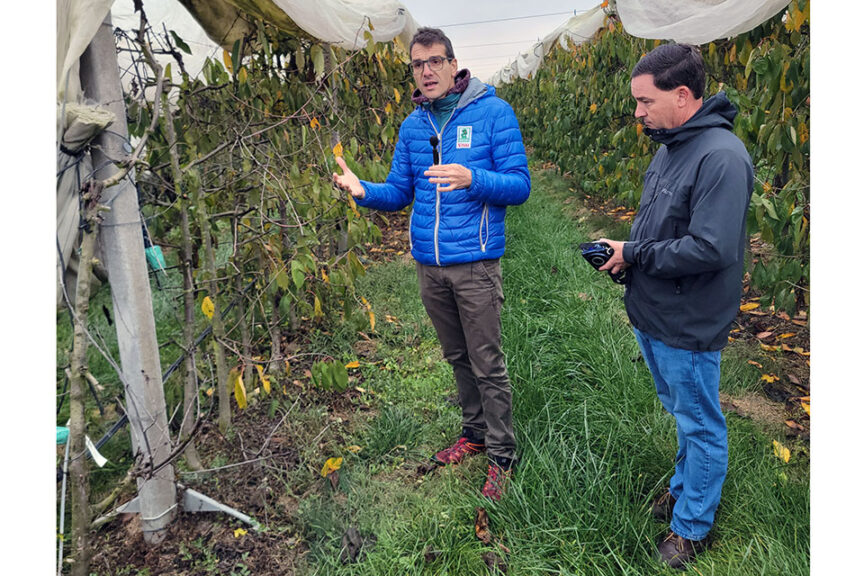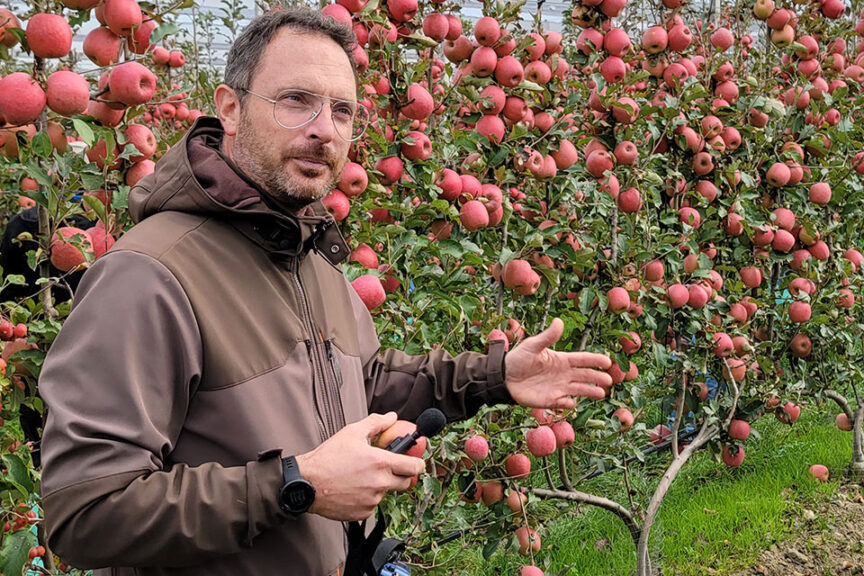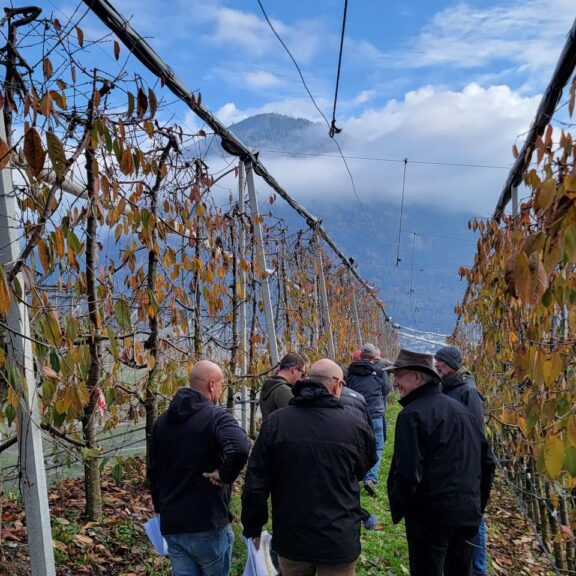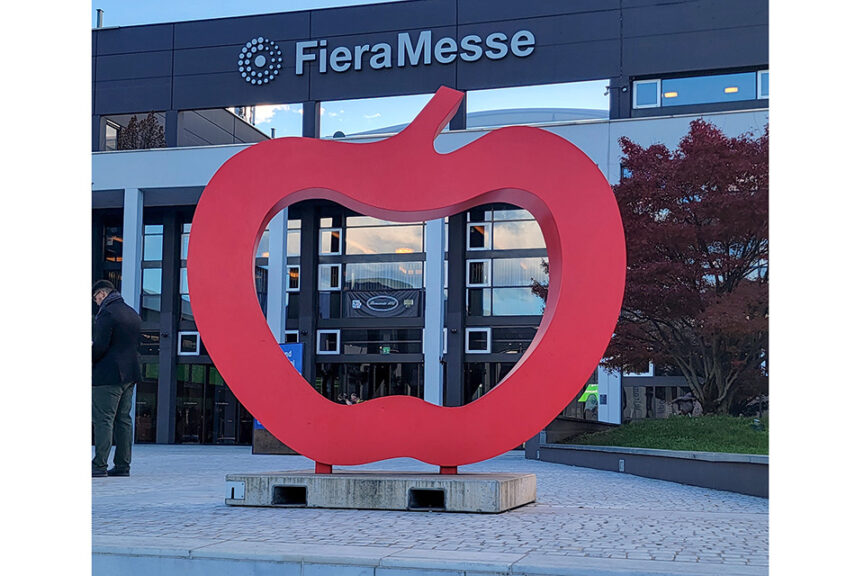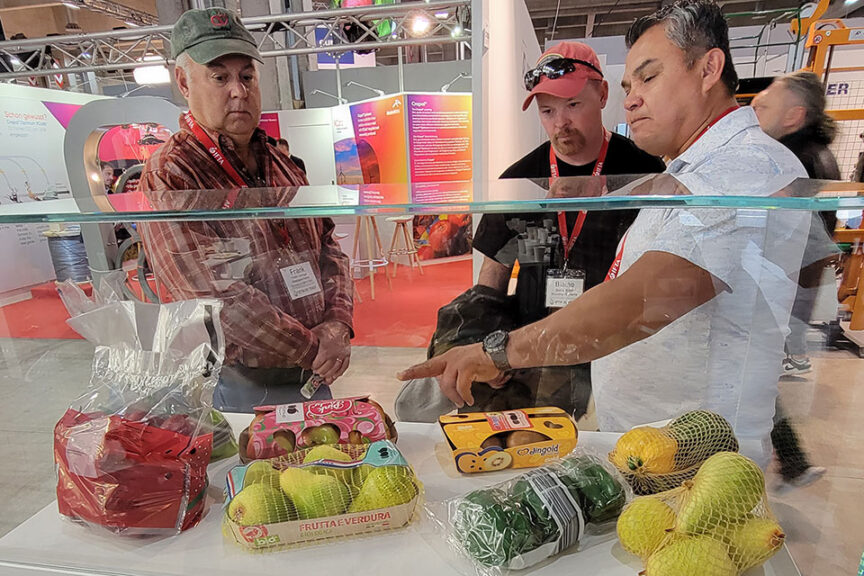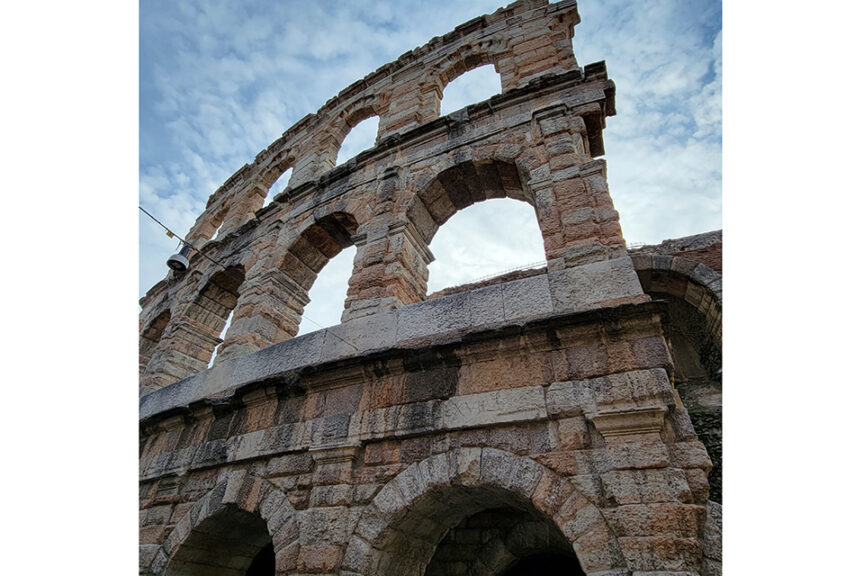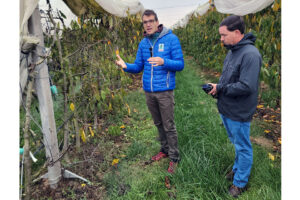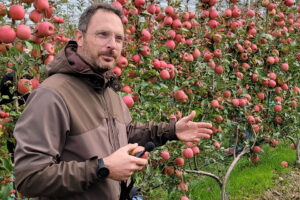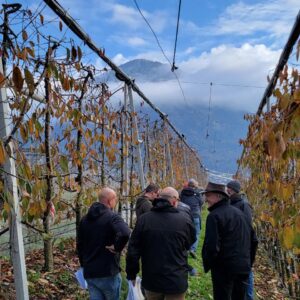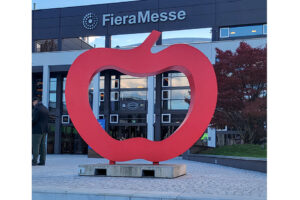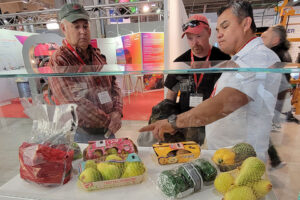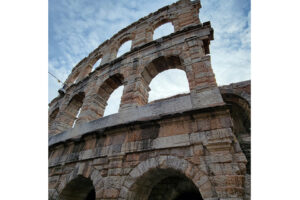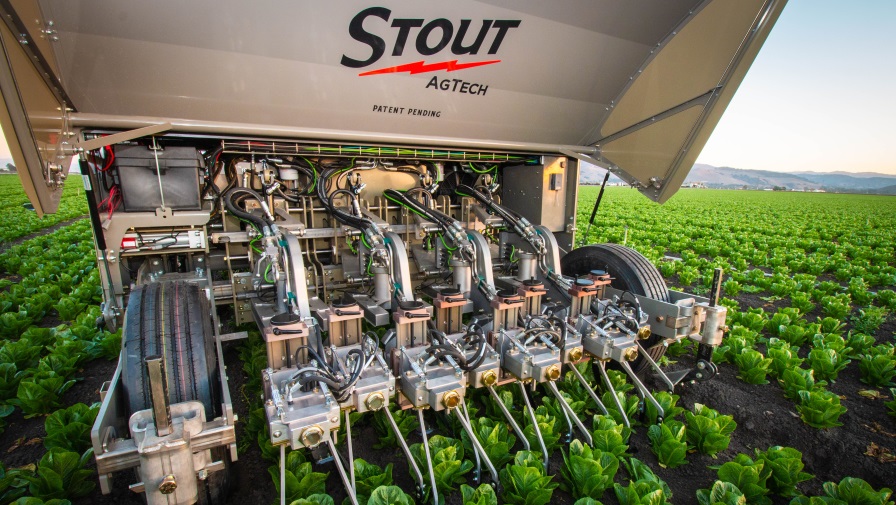International Fruit Tree Association Tour Takes In the Best of Italian Agriculture
In Italy, food is more than just for sustenance, as it’s often considered in the U.S. The country is well known for its people’s long, leisurely meals. Turn on the television, and you might see an advertisement for ‘Pink Lady’ apples. And if you turn the channel, you’re apt to find a station devoted to agricultural news.
Its differences were widely appreciated by a large group of travelers from mostly the U.S. as well as Canada — as well as a few other countries — who toured Northern Italy in mid-November. Participants of the “IFTA in Italy” event (including me) got a look at not only the country’s apple and cherry orchards but were also able to sample the fine cuisine as well. It’s a lot more than pizza, although pizzerias do seem nearly omnipresent.
First off, the group assembled in Bologna, then headed for EIMA, the International Agricultural and Gardening Exposition. It lasts five full days, and likely takes that long to appreciate the vast array of equipment where the color of the day was green. Especially when it comes to specialty crops, exhibitors touted machines and other products that emit less air pollution (think electric and hybrid), don’t waste inputs (especially pesticides), and use a lot less water.
Water conservation was definitely on the minds of Italian growers. Take the Salvi River, which flows through the area where the group first toured orchards, as an example. The river is lower than it’s been — judging from exposed rocks — for an estimated 1,000 years. Ordinarily they receive summer storms, Jacopo Diamanti, Research and Development Manager at the aptly named Salvi says, which, like the other, partner organization visited, Mazzoni, is located near Ferrara/Vicenza.
“But the last three years we had to water until October because of the drought,” he says. “We are not having the rains, unfortunately.”
At Mazzoni, Manager Michele Gerin says the drought has taken its toll. It’s the largest pear production region in Italy, but the drought, combined with pear psylla and alternaria, has led to so many problems over the past few years that growers have largely stopped planting pears.
Another problem Italian growers are confronting, much like their U.S. counterparts, is an acute labor shortage. Gerin says they have traditionally sourced laborers from Eastern Europe, but lamented the German growers pay higher wages. Now there are many refugees from Africa, a problem in much of Europe. “But for agriculture, maybe it’s not so bad,” he says.
Another similarity with the U.S. is that Italy has large volumes of an apple variety that’s fallen out of favor — instead of ‘Red Delicious’, it’s ‘Golden Delicious’. Also like the U.S., ‘Gala’ has become a leading apple, but judging by all the plantings tour-goers saw, ‘Pink Lady’ is coming on strong.
After a stop in the beautiful city of Venice, the tour headed north into the Dolomites for a visit to the Italian version of an Extension station, which is led by Tommaso Pantezzi, where some of the similarities with U.S. growers abruptly ended. The 27,000 hectares support a whopping 3,000 farms, and just 28% have more than two hectares, which is about the minimum to farm full time. In addition, just 14% are under the age of 40, and 44% are over 60. “The problem in our area is the size of the farms — and the age of the farmers,” he says.
Pantezzi says many growers rely on government loans and other assistance, even paying 50% of the cost of new varieties, as farming is considered a public benefit. “Agriculture in our area is not just for crops,” he says, “but for the landscape.”
However, there were many similarities to the U.S. as well, as their chief pest is codling moth — although 90% of growers practice mating disruption — fire blight is a huge problem, and growers are losing many key pesticides, such as chlorpyrifos.
After a visit to the famed Laimburg Research Center, the tour headed for Bolzano, not far from the German border, to spend two days at the world’s only trade show dedicated exclusively to the apple, Interpoma. Coincidentally, this year the show focused on the U.S. as an apple nation, with the other major seminar featuring seven robotics companies in various stages of development. The consensus among tour-goers on robots is they will definitely appear in orchards. Labor problems are so acute they will drive the innovation, but robots likely won’t be commercially available for three more years.
At the departure point for many of the tour-goers, in the huge city of Milan, there was one final reminder of agriculture.
Italian growers have had serious problems with brown marmorated stink bug (BMSB), which arrived three years ago. The problem is serious enough that at one Milan hotel, the elevators have posters with a picture of a BMSB, cautioning guests to keep the windows closed lest the guest rooms are invaded by the pest.




